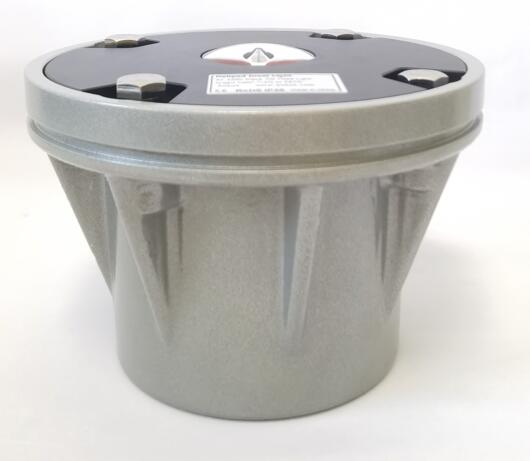Helipad Landing Lights: Essential Components for Safe Helicopter Operations
Helipad landing lights are a crucial component of aviation safety, ensuring that helicopters can land and take off safely, even in low visibility conditions. These lights are strategically designed to guide pilots during the landing approach and assist in preventing accidents during nighttime or adverse weather conditions. In this article, we will explore the importance, types, installation guidelines, and benefits of helipad landing lights in enhancing helicopter operations.
The Role of Helipad Landing Lights
Helipad landing lights provide visual cues to helicopter pilots, particularly when operating in poorly lit or challenging environments. Helicopters are often required to land in urban areas, offshore platforms, or remote locations where ambient lighting is insufficient. In such scenarios, helipad landing lights become essential for ensuring a clear and defined landing zone.
The main function of these lights is to outline the helipad's boundary, ensuring that pilots can easily spot the landing area even from a distance. Additionally, they assist in improving the pilot's depth perception, enabling them to execute a safe and accurate landing.
Types of Helipad Landing Lights
Helipad landing lights are designed in various configurations, depending on the type of helipad, its location, and specific requirements. The two most common types of helipad landing lights are perimeter lights and approach lights.

Perimeter Lights
Perimeter lights are positioned around the edges of the helipad and are designed to clearly define the landing area. These lights usually emit bright, high-intensity beams, which are visible from a significant distance. The lights are typically mounted on low poles or embedded within the surface of the helipad. In some cases, they are designed to be flush with the ground, allowing for a smooth surface during landing and preventing obstruction.
Approach Lights
Approach lights are positioned along the approach path to the helipad, guiding pilots as they approach for landing. These lights are generally placed in a straight line or an extended pattern to create a visual pathway that pilots can follow. The lights are designed to be highly visible, especially in adverse conditions such as fog, heavy rain, or low cloud cover.
| Helipad Landing Lights |
Floodlights
In some instances, floodlights are used to provide additional illumination for the helipad. These are usually positioned at strategic points around the helipad to ensure that the landing area is well-lit. Floodlights are commonly used in areas where night operations are frequent or when the natural lighting conditions are insufficient.
Obstacle Lights
In addition to the perimeter and approach lights, some helipads are equipped with obstacle lights. These lights are typically placed on nearby structures, such as buildings or trees, that could pose a risk to helicopter operations. Obstacle lights are designed to alert pilots to the presence of potential hazards.
Installation Guidelines for Helipad Landing Lights
Proper installation of helipad landing lights is essential to ensuring their effectiveness. Several key factors must be taken into account when planning and installing these lights:
Helipad Size and Shape
The size and shape of the helipad influence the type and number of landing lights required. Larger helipads, especially those used for commercial or industrial operations, may need additional lights or more powerful fixtures to ensure optimal visibility.
Location and Terrain
The location of the helipad plays a significant role in determining the lighting requirements. For helipads located in remote or offshore areas, the lighting system must be designed to withstand harsh environmental conditions, such as high winds, saltwater exposure, or extreme temperatures.
Light Intensity and Color
The intensity and color of the helipad landing lights are carefully regulated to comply with aviation safety standards. The lights must be bright enough to be visible from a considerable distance, but they should not be so intense that they cause glare or impair the pilot's vision. In general, helipad lights are often configured with a white or green color, which is easily distinguishable from other aviation lights.
Power Supply and Backup
A reliable power supply is critical to the operation of helipad landing lights. Since helicopter operations are often conducted in areas with limited infrastructure, it is essential that helipad lighting systems include backup power options, such as battery-powered or solar-powered lights, to ensure continuous operation during power outages or emergencies.
Benefits of Helipad Landing Lights
The installation of helipad landing lights offers numerous benefits to both helicopter operators and passengers:
Enhanced Safety
The primary benefit of helipad landing lights is the enhanced safety they provide. With clear visual indicators of the landing area, pilots are better able to navigate and land the helicopter accurately, even in challenging conditions. This reduces the risk of accidents, such as landing off-center or colliding with obstacles.
Increased Operational Efficiency
By allowing helicopter operations to take place safely at night or in poor weather conditions, helipad landing lights contribute to increased operational efficiency. This is particularly important for industries such as emergency medical services, oil and gas, or search and rescue operations, where quick access is crucial.
Compliance with Regulations
Many countries and regions have strict regulations regarding the installation and maintenance of helipad lighting systems. Compliance with these standards is not only necessary for legal reasons but also ensures that the helipad remains safe and operational for both commercial and private helicopter flights.
Improved Visibility
Helipad landing lights improve the visibility of the landing zone for both the pilot and ground crew. In addition to assisting pilots during landing and takeoff, these lights help ground personnel monitor the helicopter’s movements and ensure safe operations around the helipad.
Helipad landing lights are an essential component of helicopter operations, ensuring safety, reliability, and efficiency. With proper installation and maintenance, these lights enhance the pilot's ability to land in a wide range of conditions, from nighttime operations to low visibility scenarios. As the demand for helicopter services grows, the importance of advanced helipad landing light systems will continue to rise, providing vital support for the aviation industry.
